András has just became ready with the stainless steel plates of our 4th generation prototype. The purpose of these plates is threefold:
Unlike the previous versions, this version of the plate contains the two half holes that enable the permament interconnection of the two keyboards halves.
[fusion_builder_container hundred_percent="yes" overflow="visible"][fusion_builder_row][fusion_builder_column type="1_1" background_position="left top" background_color="" border_size="" border_color="" border_style="solid" spacing="yes" background_image="" background_repeat="no-repeat" padding="" margin_top="0px" margin_bottom="0px" class="" id="" animation_type="" animation_speed="0.3" animation_direction="left" hide_on_mobile="no" center_content="no" min_height="none"]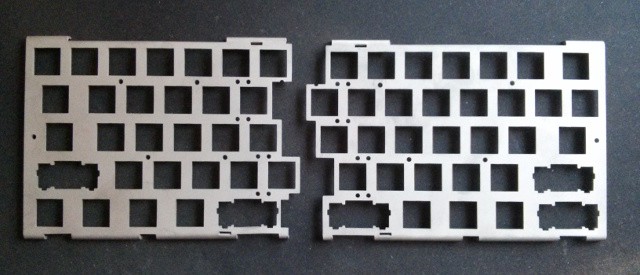
[/fusion_builder_column][/fusion_builder_row][/fusion_builder_container]
We foresee the UHK to be mainly used in a split fashion and expect people to use it merged almost exclusively for transportation purposes.
That being said, despite of our assumptions there may be a number of people who might want use it in a merged state all the time. The magnets that hold the two keyboard halves together are pretty strong but still the halves can come apart occasionally. To address this scenario András, mechanical engineer extraordinaire has come up with a way to permamently interconnect the halves. The beauty of his design is that all it takes is screwing a single screw.
People say that a picture says more than a thousand words and we have not one but four pictures that show you our design.
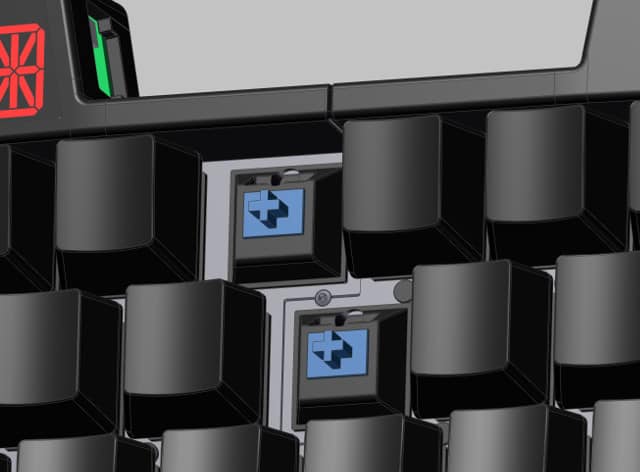
Labelling the keycaps of our 4th generation prototype was like many other: it's critical to know about the right technology for the job. After talking to a super-knowledgable guy it was a matter of sending over some files to a company, spending some hard-earned cash and waiting a little while. Then András had to precisely position the labels and transfer them to the blank keycaps which he did marvelously.
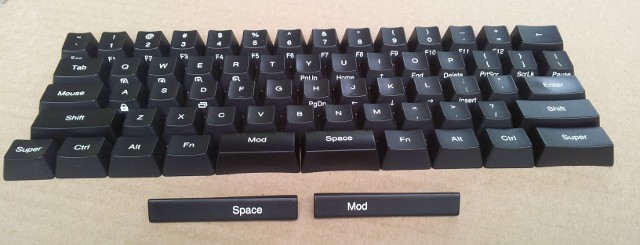
Just to avoid any misunderstanding, a blank version is planned so fear not!
We're nearly finished with the 4th generation prototype that will feature more powerful microprocessors and probably most importantly will be able to drive our new, snazzy LED display! Yay!
[fusion_builder_container hundred_percent="yes" overflow="visible"][fusion_builder_row][fusion_builder_column type="1_1" background_position="left top" background_color="" border_size="" border_color="" border_style="solid" spacing="yes" background_image="" background_repeat="no-repeat" padding="" margin_top="0px" margin_bottom="0px" class="" id="" animation_type="" animation_speed="0.3" animation_direction="left" hide_on_mobile="no" center_content="no" min_height="none"]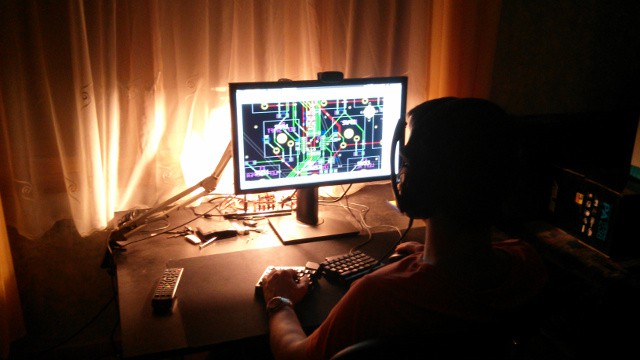
As written before despite its small size designing the LED display was a vast undertaking. As it turned out we started out the wrong way. After designing and fabricating all the layers meticulously we ended up with a display of uneven light distribution and a complex assembly process. The solution?
Lately, we've realized that there are companies dedicated to fabricating custom LED displays. You may find displays like this in you washing machine or microwave oven. They're really everywhere! After talking to about two dozen of such companies we've found the one and they were able to create a prototype for us that we cannot wait to reveal so here it is!
[fusion_builder_container hundred_percent="yes" overflow="visible"][fusion_builder_row][fusion_builder_column type="1_1" background_position="left top" background_color="" border_size="" border_color="" border_style="solid" spacing="yes" background_image="" background_repeat="no-repeat" padding="" margin_top="0px" margin_bottom="0px" class="" id="" animation_type="" animation_speed="0.3" animation_direction="left" hide_on_mobile="no" center_content="no" min_height="none"]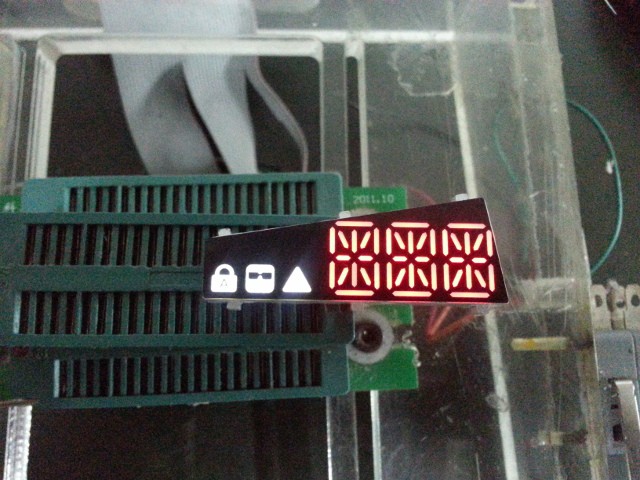
This display already looks promising but the final, mass produced one will be significantly better, offering more even light distribution and smaller dead space between the individual segments. We're so excited about this stuff!
[/fusion_builder_column][/fusion_builder_row][/fusion_builder_container]
Alt+Tab is one of the most often used keyboard shortcuts. It's used hundreds of times per day to switch between windows quickly. There's just one problem with it. Have you ever wondered how you hold your hand when invoking it?
[fusion_builder_container hundred_percent="yes" overflow="visible"][fusion_builder_row][fusion_builder_column type="1_1" background_position="left top" background_color="" border_size="" border_color="" border_style="solid" spacing="yes" background_image="" background_repeat="no-repeat" padding="" margin_top="0px" margin_bottom="0px" class="" id="" animation_type="" animation_speed="0.3" animation_direction="left" hide_on_mobile="no" center_content="no" min_height="none"]
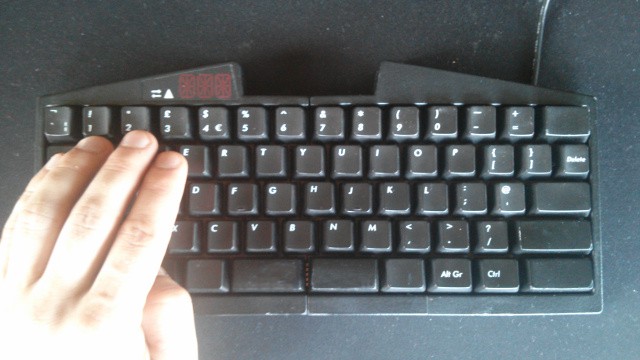
I have to bend my left thumb under my hand to reach left Alt. This is not a natural posture and possibly even more awkward than the Vulcan salute.
How about invoking Alt+Tab via a convenience shortcut like Mod+D?
[/fusion_builder_column][fusion_builder_column type="1_1" background_position="left top" background_color="" border_size="" border_color="" border_style="solid" spacing="yes" background_image="" background_repeat="no-repeat" padding="" margin_top="0px" margin_bottom="0px" class="" id="" animation_type="" animation_speed="0.3" animation_direction="left" hide_on_mobile="no" center_content="no" min_height="none"]
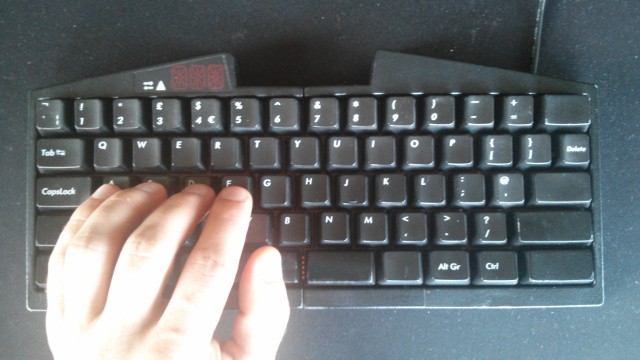
Now we're talking! No bending fingers or leaving the home row anymore.
We don't even second think about how clumsy the first posture is because we're so used to it, and there aren't alternative shortcuts on regular keyboards. Having used our third generation prototype for about half a year, going back to a regular keyboard that is not configurable this way makes me feel really uncomfortable. This is exactly the kind of thing that doesn't seem like a big deal, but it is.
People invoke Alt+Tab hundreds of times per day which translates to hundred(s) of thousands of times per year. We are here to provide you a more comfortable way to do this and many other things.
Should you have any ideas about (possibly application-specific) custom shortcuts, you'd like to use, please let us know!
[/fusion_builder_column][/fusion_builder_row][/fusion_builder_container]
We thought that those of you who like documentaries would appreciate the behind of scenes look of how our trailer video was made. Luckily for us Csaba Kiss, creator of our trailer video has made a great write-up about the process with many pictures included.
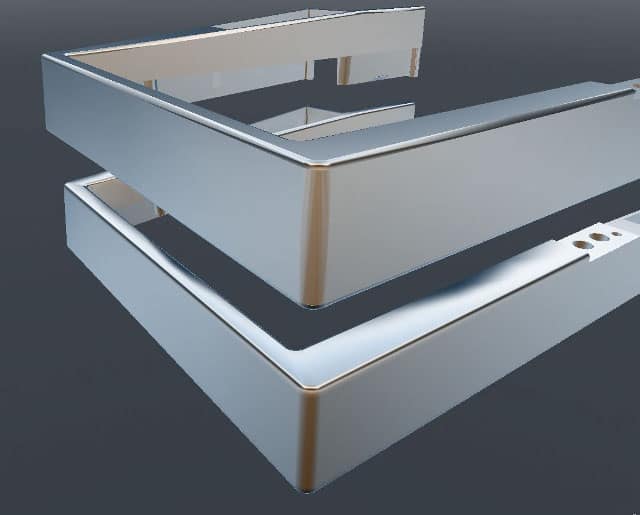
Csaba is a great guy and a knowledgable professional who will also shoot our Kickstarter video. Should you need any such work to be done, he's your man.
Lately, we've put a lot of work into making our image look snazzy by redesigning our site and finishing our trailer video. Looks like our efforts are starting to pay off.
A week ago our traffic exploded thanks to a subreddit. Later on, Geekhack also started and notice us and on this very day 444.hu which is one of the largest news sites of Hungary published a (Hungarian) article about us.
[fusion_builder_container hundred_percent="yes" overflow="visible"][fusion_builder_row][fusion_builder_column type="1_1" background_position="left top" background_color="" border_size="" border_color="" border_style="solid" spacing="yes" background_image="" background_repeat="no-repeat" padding="" margin_top="0px" margin_bottom="0px" class="" id="" animation_type="" animation_speed="0.3" animation_direction="left" hide_on_mobile="no" center_content="no" min_height="none"]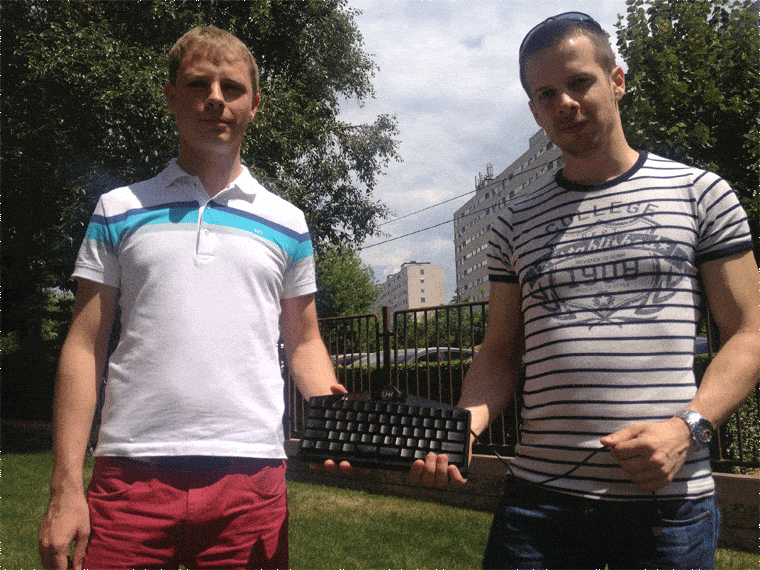
We're grateful for everyone involved, let's keep up the buzz![/fusion_builder_column][/fusion_builder_row][/fusion_builder_container]